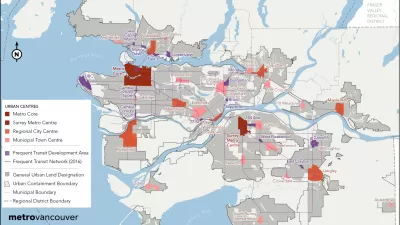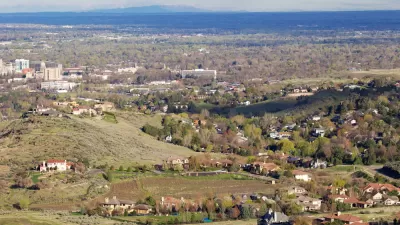A new joint powers authority comprised of cities and county supervisorial districts will help planning efforts in the San Fernando Valley--a sub-region often lost in the shuffle of the sprawling Los Angeles metropolis.
The article consists of Q&A with two of the San Fernando Valley Council of Governments' leading protagonists, Robert Scott and David Fleming:
"...there is a growing need for regional governance in California. We have so many problems that cross jurisdictional boundaries. A problem along the I-5 impacts Santa Clarita, Burbank, San Fernando, the city of Los Angeles, and, indirectly, Glendale. If we didn't have something like a COG, we wouldn't be able to effectively coordinate efforts."
"One of the big issues about this organization is that it can officially generate information that had previously been gathered only on a semi-official basis. At the moment, we're completing the I-5 Corridor Study, which is an economic development initiative that has been going on for the last nine months, funded by SCAG, and giving us a roadmap for the new council of governments to follow, should they adopt it."
"As far as the city Planning Commission goes, that configuration has been changed from five to nine, and we've added the Area Planning Commissions. We have something like 35, where we once had five. That has changed the complexion of the planning process. Going back to the idea that this organization will be responsible for managing the new San Fernando Valley SCAG planning sub-region, they will be able to give input in the planning process from the headwaters, from the very beginning of the process."
Thanks to James Brasuell
FULL STORY: New San Fernando Valley COG Enables Valley ‘Place’-Making

Manufactured Crisis: Losing the Nation’s Largest Source of Unsubsidized Affordable Housing
Manufactured housing communities have long been an affordable housing option for millions of people living in the U.S., but that affordability is disappearing rapidly. How did we get here?

Americans May Be Stuck — But Why?
Americans are moving a lot less than they once did, and that is a problem. While Yoni Applebaum, in his highly-publicized article Stuck, gets the reasons badly wrong, it's still important to ask: why are we moving so much less than before?

Using Old Oil and Gas Wells for Green Energy Storage
Penn State researchers have found that repurposing abandoned oil and gas wells for geothermal-assisted compressed-air energy storage can boost efficiency, reduce environmental risks, and support clean energy and job transitions.

Updating LA’s Tree Rules Could Bring More Shade to Underserved Neighborhoods
A new USC study finds that relaxing Los Angeles’ outdated tree planting guidelines could significantly expand urban tree canopy and reduce shade disparities in lower-income neighborhoods, though infrastructure investments are also needed.

California's Canal Solar Projects Aim to Conserve Resources and Expand Clean Energy
California’s Project Nexus has begun generating electricity from solar panels installed over irrigation canals, with researchers and state agencies exploring statewide expansion to conserve water and boost clean energy production.

HHS Staff Cuts Gut Energy Assistance Program
The full staff of a federal program that distributes heating and cooling assistance for low-income families was laid off, jeopardizing the program’s operations.
Urban Design for Planners 1: Software Tools
This six-course series explores essential urban design concepts using open source software and equips planners with the tools they need to participate fully in the urban design process.
Planning for Universal Design
Learn the tools for implementing Universal Design in planning regulations.
Heyer Gruel & Associates PA
City of Moreno Valley
Institute for Housing and Urban Development Studies (IHS)
City of Grandview
Harvard GSD Executive Education
Salt Lake City
NYU Wagner Graduate School of Public Service
City of Cambridge, Maryland





























